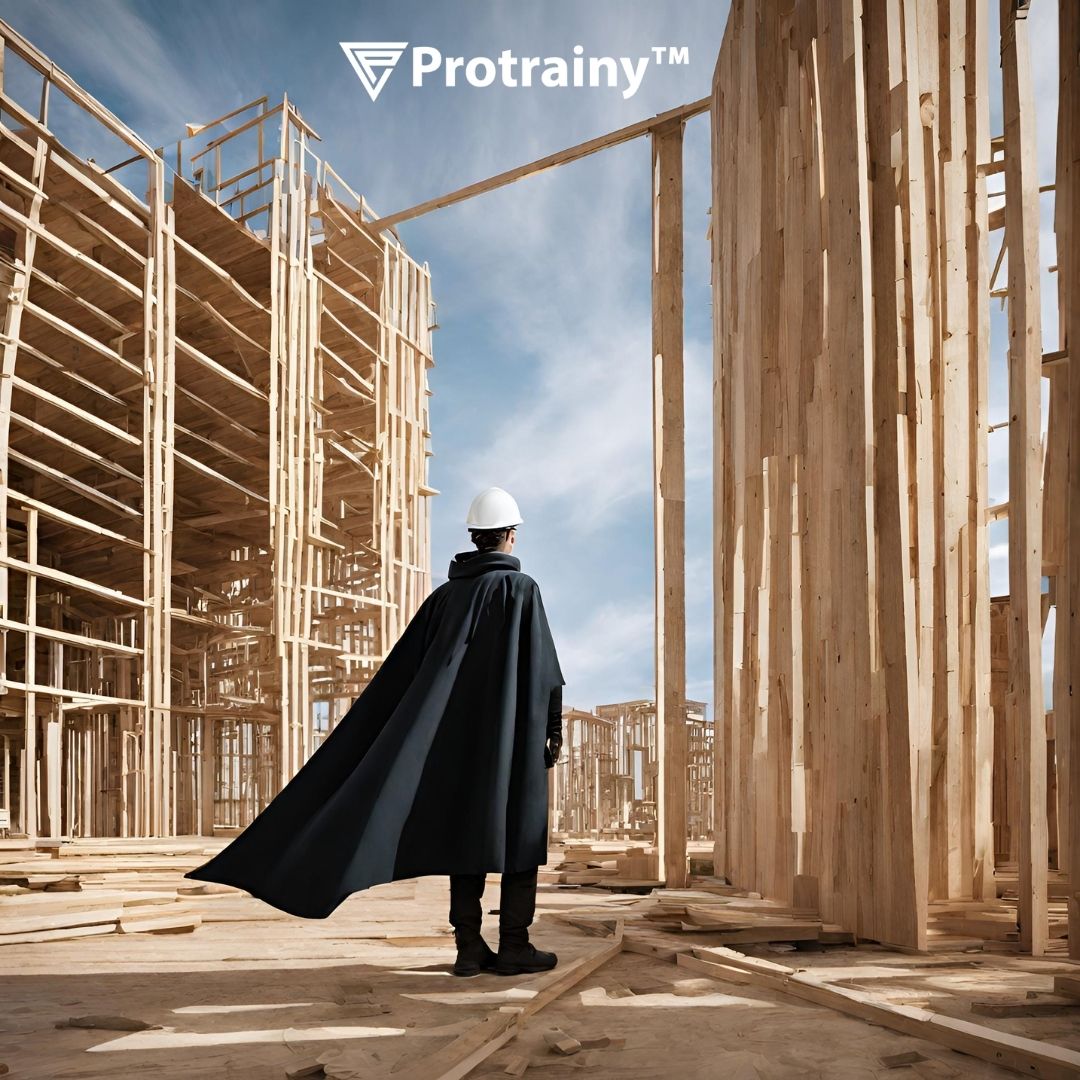Blogs
- Home
- Blogs
Cross-Laminated Timber: A Timber Revolution in High-Rise Construction
Protrainy | Sept. 2, 2023, 12:57 p.m.

Introduction:
In the realm of high-rise construction, the material of choice has traditionally been steel and concrete. However, a quiet revolution is underway, and it's all about wood—specifically, Cross-Laminated Timber (CLT). This innovative building material is changing the way we think about tall buildings, offering a sustainable, strong, and aesthetically pleasing alternative to conventional construction materials. In this blog, we'll embark on a journey into the world of CLT, exploring its real-world applications, the technology behind it, and the transformative impact it has on high-rise construction.
Reaching for the Sky: The Challenge of High-Rise Construction
As our cities continue to grow vertically, so does the demand for construction materials that are both eco-friendly and structurally robust. Traditionally, steel and concrete have been the materials of choice for skyscrapers due to their strength and durability. However, these materials have a significant carbon footprint and are less sustainable than timber. Cross-Laminated Timber, or CLT, is a game-changing wood-based building material. It is composed of multiple layers of lumber stacked perpendicular to one another and then glued and pressed together. The result is a solid, thick panel that combines the strength of wood with the stability of cross-layering. One of CLT's most significant advantages is its sustainability. Wood is a renewable resource, and CLT production has a low carbon footprint compared to steel and concrete. Furthermore, trees absorb carbon dioxide as they grow, making wood a carbon-neutral building material.
CLT panels are not only sustainable but also incredibly strong. The cross-layering technique gives them exceptional structural stability and load-bearing capacity, allowing them to rival steel and concrete in many applications. While concerns about fire have often limited the use of wood in tall buildings, CLT has demonstrated remarkable fire resistance. Due to its thickness and the way it chars, CLT can maintain its structural integrity even in the event of a fire, similar to how timber beams behave in a forest fire. CLT's prefabricated nature speeds up construction significantly. Panels are manufactured off-site, reducing on-site labor and construction time. The precision of CLT panels also minimizes waste and ensures a high level of construction quality.
Beyond its structural advantages, CLT offers aesthetic benefits. The warmth and beauty of wood create a unique and inviting atmosphere inside buildings. The use of wood also has positive psychological effects on occupants, promoting well-being and reducing stress. Treet, located in Bergen, Norway, stands as a testament to the capabilities of CLT. This 14-story residential building reaches a height of 49 meters (160 feet) and contains 62 apartments. Treet showcases the potential for tall timber buildings in urban environments, demonstrating that wood can compete with steel and concrete in the high-rise sector.
Impact and Beyond: Tall Timber Buildings for Sustainable Cities
The impact of CLT extends far beyond individual construction projects. It represents a shift in the way we think about urban development, sustainability, and the role of natural materials in our cities. Tall timber buildings offer an eco-friendly alternative to traditional skyscrapers, contributing to reduced carbon emissions and a more sustainable future.
Conclusion: Timber's Ascent in the Sky
Cross-Laminated Timber is ushering in a new era in high-rise construction, proving that sustainability and strength can coexist. As our cities continue to evolve, so does our approach to construction, driven by the need for eco-friendly, efficient, and beautiful buildings. CLT is more than a building material; it's a symbol of our commitment to a greener future, where timber reaches new heights in the urban landscape. In the age of climate change and environmental responsibility, CLT is not just transforming high-rise construction; it's reaching for the sky with a vision of sustainable, beautiful, and functional cities built on the enduring strength of wood.
